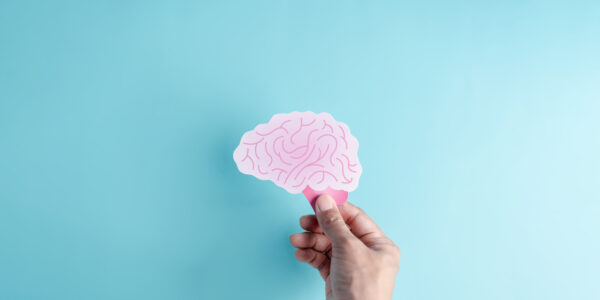LISTEN TO THIS ARTICLE:
Attention-deficit hyperactivity disorder (ADHD) affects men and women of all ages in most aspects of their lives. In school, children with ADHD have trouble focusing, act impulsively, and often can’t sit still. ADHD continues into adulthood, and while some may find that symptoms subside (or at least become more manageable), many others will find ADHD only starting to make itself known. They’ve managed the symptoms throughout childhood but find themselves as adults struggling at work, at home, and in relationships.
While medication and some therapies can help, many people either can’t afford them or can’t access them. We spoke with an expert in the field to learn some simple tips that can help people manage their ADHD.
Adult ADHD is often hidden
Dr. Sanford Silverman, a licensed psychologist and owner of the Center for Attention Deficit and Learning Disorders in Scottsdale, Arizona, says the fact that so many adults with ADHD don’t start experiencing it until adulthood means ADHD is chronically under reported in adults.
“There’s no one who could accurately say how many adults have ADHD,” he says. “Some agencies might estimate around four percent, or about eight million Americans. My opinion is that it’s a lot higher than that.”
It also means these men and women can report being more discouraged by the symptoms of the condition. Many don’t realize they have ADHD.
“Simply getting checked and diagnosed is a real source of relief for people,” Silverman says. “This often gives them hope and empowers them to make changes that will help them.”
Here are five such changes that can help adults manage the symptoms of ADHD:
1. Try fish oil
Maintaining a healthy diet is another great way to keep the symptoms of adult ADHD in check, Silverman says. This means eating meals that are high in protein and low in carbohydrates. “Sugar doesn’t cause ADD, but it doesn’t help,” he adds. “It makes your moods go up and down.”
Studies suggest supplementing a healthy diet with a small amount of fish oil may also help both children and adults manage ADHD symptoms. This is because omega-3 fatty acid helps dopamine move freely among brain cells, improving focus and attentiveness.
2. Avoid clutter
Adults with ADHD often find themselves overwhelmed with the demands of their daily lives. Silverman says clutter can refer to your schedule, which you should try to keep as orderly and structured as possible, or your physical environment.
“If you have a desk, keep it clean and clear,” he says. “A planner book that’s easy to read can help you keep track of appointments and things, and Post-it notes are really helpful when it comes to reminding yourself to do something that’s outside your normal routine.”
3. Maintain good sleep habits
Just as you should keep to a daily routine, you should also keep to a nightly one, Silverman says. A consistent sleep schedule — going to bed and waking up at roughly the same time every night and day — is a really simple way to manage your ADHD symptoms.
To do this, Silverman recommends avoiding caffeine come late afternoon and not exercising in the evenings. Go easy on the alcohol as well, because that decreases the quality of sleep and makes it less refreshing. You should also leave your phone out of the bedroom and stop checking it about an hour before you go to sleep. That’s because the blue light it emits interferes with your ability to generate melatonin, the chemical that makes you feel tired.
One 2016 study found that subjects who self-reported using their phone at night, including simply checking notifications, were more likely to self-report more sleep problems and disruptions than those who left their phone alone before bed.
4. Put down the phone
Potential sleep problems aren’t the only reason to limit phone time. There’s no easier way to get distracted, Silverman says, than with technology that’s constantly at the tip of your fingers.
“People, in general, get cognitively overloaded with all the information we have these days. Constantly checking your phone or your email is not good when it comes to trying to manage ADHD,” he says.
Because all the emails and messages we receive demand part of our attention and energy, they also tend to make you feel stress, which Silverman says is also bad for those with ADHD.
So find well-defined windows of time to work email checking and phone fun into your daily routine. If you find it’s causing you added anxiety, simply close your eyes and take some deep breaths. Silverman says this will help you maintain an even heart rate and release tension, which is beneficial to ADHD patients.
5. Make time for exercise
Speaking of heart rate, exercise will raise it, but it’s nonetheless a very reliable way of keeping the symptoms of ADHD relatively in check.
Like omega-3s, exercising releases dopamine in your brain. It also lowers stress levels and helps you sleep better at night.
In 2016, researchers at the University of Georgia found that young men with ADHD who cycled at a moderate intensity for 20 minutes reported being less confused and more motivated to perform cognitive tasks than those who didn’t cycle.
Silverman says it doesn’t matter what type of exercise you choose, as long as it’s something you like and choose to do regularly.


 Learn
Learn Get News
Get News Find Help
Find Help
 Share
Share
 Share
Share
 Share
Share
 Share
Share



